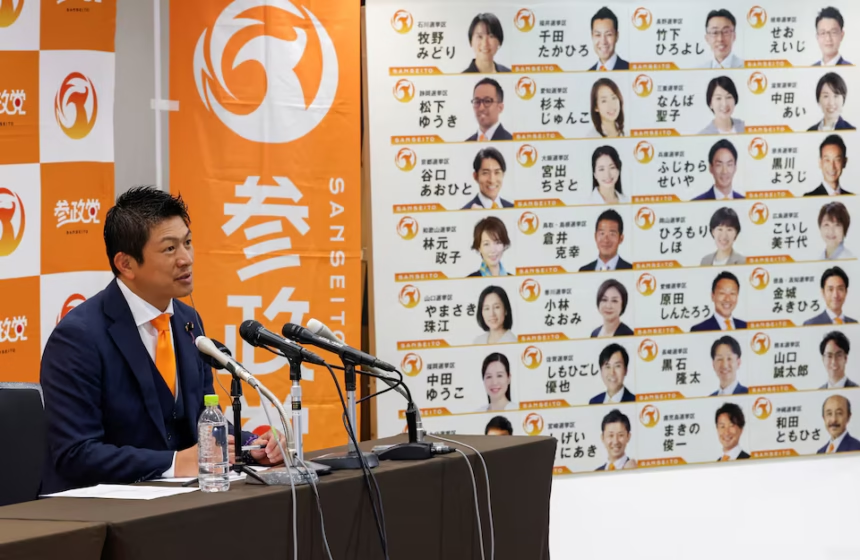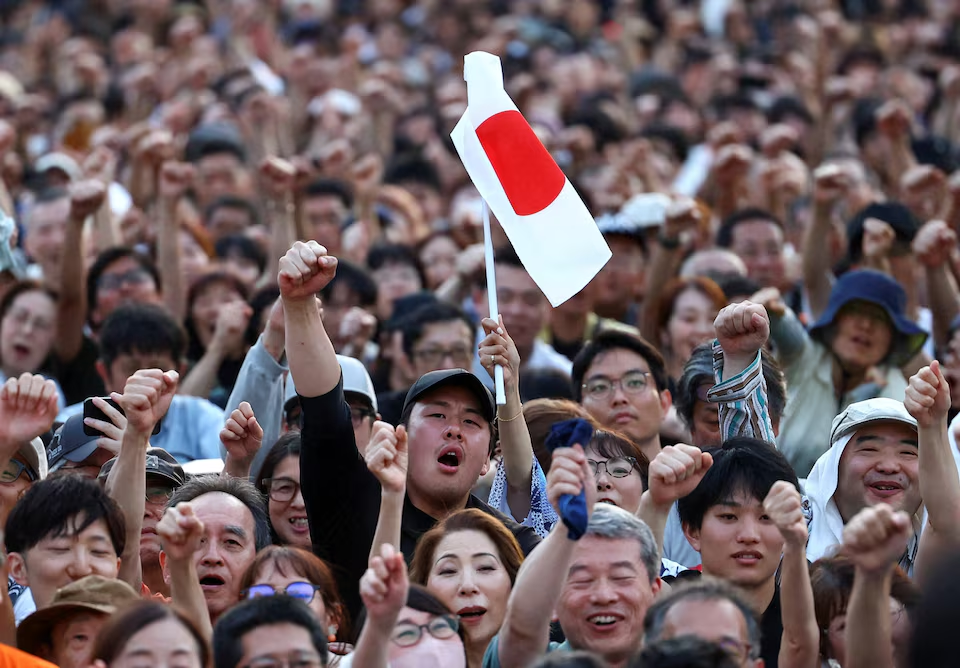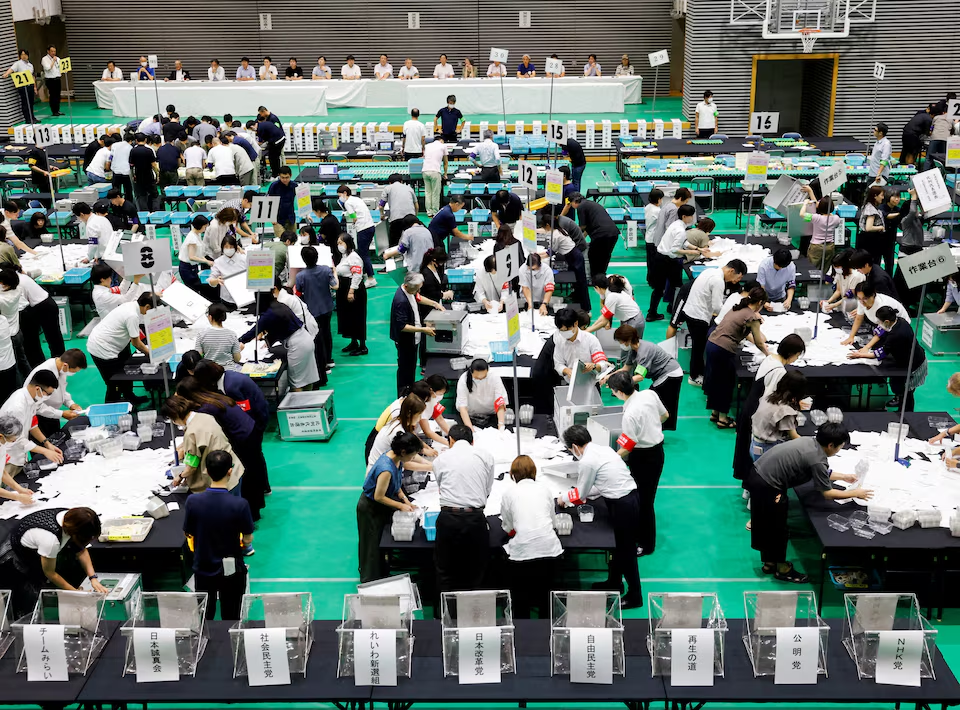TOKYO – In a result few predicted, the far-right Sanseito party has come out as one of the main winners in Japan’s upper house contest, securing 14 seats out of 248. Three years earlier, the group held only one seat. Sanseito’s rapid growth reflects rising support for its strong anti-immigration stance, populist policies and active online campaigning.
Their ‘Japanese First’ slogan has caught the mood of voters unhappy with current policies, pointing to a major change in a country known for steady politics. With right-wing populism spreading in other countries, Sanseito’s rise raises new questions for Japan’s approach to immigration and identity.
Sanseito (meaning “Political Participation Party”) began in March 2020, during the COVID-19 outbreak, as a YouTube movement that pushed vaccine conspiracy theories and talked of secret international plots.
The party’s leader, Sohei Kamiya, a former supermarket manager and English teacher aged 47, has since steered Sanseito toward a clearer ‘Japanese First’ message. This approach focuses on national control, long-held traditions and strict immigration rules. Winning an estimated 6.9 percent of the proportional representation vote, the party’s gains have unsettled Japan’s major parties.
Sanseito’s 14 upper house seats may seem small compared to the ruling Liberal Democratic Party (LDP) and its coalition partner Komeito, but they mark a real shift. Prime Minister Shigeru Ishiba’s coalition lost its upper house majority, echoing its defeat in the lower house last October, forcing it to depend more on opposition parties.
Reuters reports experts link Sanseito’s support to voter anger about slow economic growth, rising prices and a weak yen. Many Japanese shoppers have seen staple foods such as rice double in price after poor harvests and new policies.
Challenging Immigration
At the centre of Sanseito’s campaign is a sharp warning about immigration, often described as a “silent invasion.” Kamiya says immigration puts Japanese culture and jobs at risk, pointing to what he calls the misuse of legal systems by foreigners and issues of crime.
While non-Japanese citizens make up only 3 percent of the population, or about 3.8 million people in 2024, Sanseito’s message has struck a chord with those feeling pressure from rising costs and an ageing society.
At a news conference in June, Kamiya denied any anti-foreigner intent. “Japanese people feel uneasy because there are no clear rules for accepting foreigners,” he said. Still, the party’s policies call for tighter entry limits, regular checks on the loyalty of long-term foreign residents, and ending welfare payments to non-Japanese citizens.
Sanseito also wants to pay families a monthly child benefit of 100,000 yen (£500/US$670) to encourage higher birth rates, while pushing for “traditional family values” and scrapping laws that support LGBT understanding.
Opponents, such as the Constitutional Democratic Party (CDP) and liberal commentators, say Sanseito is blaming foreigners for the country’s problems. Professor Ken Endo from the University of Tokyo says their message risks harming Japanese democracy. “If the centre-right falls apart, democracy can suffer,” he warned, noting that even the mainstream LDP has toughened its line on immigration because of Sanseito’s growth.
Right-Wing Populism in a Global Context
Sanseito’s story ties in with similar movements elsewhere, such as Germany’s Alternative für Deutschland (AfD), the UK’s Reform, and Donald Trump’s “America First” push in the United States. Kamiya has admitted to following Trump’s style, though he says his vision for Japan is more community-minded than self-serving. Like parties overseas, Sanseito appeals to economic worries and a sense of losing cultural traditions.
Their platform opposes too much free trade and dependence on foreign supply chains. Many Japanese voters, especially younger men, support a move towards growing more at home and are wary of global ties. The party also questions health rules and vaccinations, similar to other populist groups. Lecturer Jeffrey Hall from Kanda University says Sanseito’s success has normalized anti-immigrant talk that used to be avoided in Japanese politics. “Criticism of foreigners, once taboo, is now open.”
Worldwide, frustration over flat wages, higher living costs and doubts about multicultural policies has helped groups like Sanseito. Their online following is strong, with a YouTube channel of 400,000 subscribers, outpacing the LDP by three to one. They mix talk about national pride with health advice and criticism of the establishment, drawing in new supporters.
Rapid Growth and Controversy
Sanseito’s fast rise has drawn plenty of criticism. In early 2025, Kamiya caused upset by claiming equality policies discouraged Japanese women from having children, which turned some voters away. To appear more open, Sanseito ran female candidates, including pop singer Saya, who secured a seat in Tokyo.
The party has faced further backlash over claims of rewriting history and suspected links to overseas organizations. In May, Kamiya sparked anger when he suggested only the US was responsible for Okinawan civilian deaths in WWII, leading to a formal protest from local leaders. A candidate’s interview with Russia’s Sputnik News also attracted negative attention, but Kamiya denied any ties.
Despite these setbacks, Sanseito’s digital strategy and community outreach have kept its momentum strong. The party charges 1,000 yen monthly for regular membership, rising to 2,500 yen for premium content, while the LDP asks for a single 4,000 yen annual fee. This subscription approach fits today’s engagement trends. With over 140 local assembly members and new seats in Tokyo’s city government, Sanseito’s influence keeps growing.
What This Means for Japan
Sanseito’s election gains have forced larger parties to rethink their approach. The LDP, under pressure from its base, has promised to aim for “zero illegal foreigners” and set up a task force on foreign crime. Meanwhile, groups like the CDP want to encourage multiculturalism and update immigration laws, revealing a split over how to treat foreign residents.
For Japan, a country facing labour shortages and an ageing population, an anti-immigration stance could cause problems. From 2022 to 2025, Japan accepted a million foreign workers to help its economy, but harsh attitudes might drive away the workers it still needs. Commentators warn that this trend risks damaging Japan’s international reputation and could harm tourism, which is a key earner.
As Kamiya told supporters after the election, “We are gradually growing and meeting people’s expectations.” Whether Sanseito’s moment is short-lived or the start of a lasting movement remains uncertain. Right now, their ‘Japanese First’ campaign has changed how Japanese politics is discussed, reflecting a larger global push towards nationalism and away from globalist ideas.
Related News:
Japan Warns Firms in Taiwan: You are on Your Own if China Invades


















